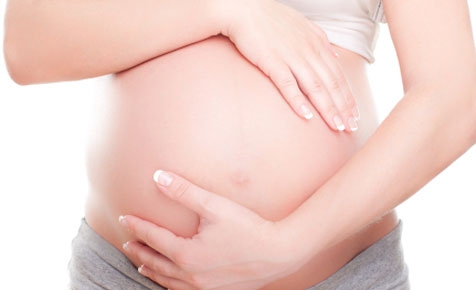Overprotective parents have told us for years to be careful because you can get pregnant at any time of the month. These words have been spread around for far too long and many people believe that. Actually the 12th day to the 14th day after the last period is our best chance to get pregnant. Some says that women are only fertile for 5 days prior and 1 day after ovulation occurs. But is that so? Can I get pregnant after ovulation? Now let's read on and find more about ovulation and pregnancy.

Can I Get Pregnant After Ovulation?
"Can I Get Pregnant After Ovulation?" Yes, you can. But your opportunity of getting pregnant after ovulation is quite small.
Once your egg is released from the follicle, you have about 12-48 hours before it becomes unviable. Sperm can live for up to 5 days in a woman’s body thanks to the cervical mucus. That means that if there is sperm waiting in the fallopian tubes already, it can fertilize the egg just after it is released. It only takes healthy, active sperm 6 hours to get to the fallopian tube after ejaculation, which means that there is a chance that for 1 to 2 days after ovulation you could become pregnant.
Rates of Pregnancy
The farther away from the day of ovulation, the less chance you have of getting pregnant. The maximum chance you have of getting pregnant when fertile is about 30%. Although the odds of getting pregnant before ovulation are slim, but there is a chance. Here are the rates of pregnancy in line with days before and after ovulation:
5 days before ovulation--0% | Day of ovulation--15% |
4 days before ovulation--11% | 1 day after ovulation--.09% |
3 days before ovulation--15% | 2 days after ovulation--.05% |
2 days before ovulation--20% | 3 days after ovulation--0% |
1 day before ovulation--26% |
When Does Ovulation Happen?
Calculate the Ovulation Date
Your date of ovulation varies and mainly depends on your menstrual cycle. Typically, depending on the length of your cycle, ovulation can occur within days of your period, in the middle of your cycle, or even up to 2 weeks after your period.
Most of the time ovulation occurs between 12 and 16 days before the start of your menstrual period. So if your cycle is 24 days, ovulation happens on day 10; if it's 28 days, day 14; and if it's 35 days, day 21.
Some signs of ovulation include increased vaginal lubrication, increased sex drive, increased basal body temperature, an LH surge, and a softened cervix. Once you see these signs you have a 6 day window (5 days before and 1 day after) to try to get pregnant.
Can You Ovulate Twice in a Single Cycle?
After you ovulate, your hormone levels decline and in order to ovulate again, you must go through the menstruation cycle. That means you only ovulate once in any single cycle. However, it is possible that 2 eggs are released from 2 different follicles within the same 24-hour period.
The follicular stimulating hormone that rises during ovulation causes the follicles to develop in the ovaries. Normally, only one follicle releases the egg; however as hormone levels change, sometimes a second egg is released. This is how fraternal twins are born. In fact, 1 in 8 pregnancies may involve more than one egg being fertilized, but the second embryo doesn’t survive more than a few weeks. This is called vanishing twin syndrome. The second embryo is absorbed back into the body, "vanishing". So, can you ovulate twice in a cycle? No, but there is a chance that you can release 2 eggs once.
What to Expect After Ovulation?
If You Get Pregnant
Once a sperm enters an egg, the egg's coating changes so that other sperms can’t get in. This egg and sperm combination is called a zygote.
The zygote takes a 5 day trip down the fallopian tube and, after some cell division, becomes a blastocyst.
8 to 10 days after fertilization, the blastocyst attaches itself to the uterine wall. That’s when all the fun beings.
The blastocyst is now an embryo which starts to develop the placenta and produce the hormones which are detected during a pregnancy test.
If You Are Not Pregnant
The unfertilized egg will move down the fallopian tube in about 48 hours and be reabsorbed back into the body.
The follicle continues to produce progesterone for about 2 weeks and after that the levels will drop.
The endometrium will prevent blood flow to and from the uterine lining. The blood then pools in the uterus until the lining dies back, causing menstruation. And thus begins another cycle. Your cervical mucus will become more sticky or creamy in consistency.

View All Comments /Add Comment